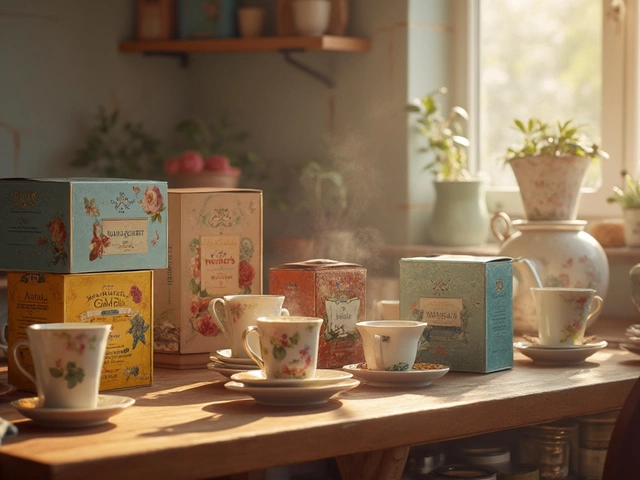Tea Enthusiast Guide: Brewing Tips, Tasting Basics, and Perfect Pairings
If you’re the kind of person who smells a tea leaf and thinks about flavor, you’re in the right place. This guide gives you straight‑forward advice you can start using today, no fluff.
How to Store Tea So It Stays Fresh
The biggest mistake many tea fans make is keeping tea in the fridge or a sunny spot. Light, heat, and moisture are tea’s enemies. Grab an airtight container – a simple glass jar works fine – and store it in a cool, dark pantry. For loose leaf blends with strong aromas, add a small food‑grade silica packet to keep humidity low. If you’ve got a collection of different teas, keep them separate; cedar or oak can transfer flavors you don’t want.
Older teas aren’t always bad. Some pu‑erhs improve with age, but most everyday greens and whites lose their punch after a year. Use the “sniff test”: if the scent is flat or smells stale, it’s time to retire it.
Brewing Basics You Can Master in One Minute
Water temperature is the secret sauce. Green and white teas love 160‑175°F (70‑80°C), while black and oolong prefer 190‑205°F (88‑96°C). If you don’t have a thermometer, let boiled water sit for 30‑45 seconds for greens, and pour straight for blacks. Measure about 2‑3 grams of leaf per 8 oz of water – that’s roughly one teaspoon. Let it steep for the time the label recommends, but start a few seconds short; you can always add a minute if it’s too weak.
Don’t over‑steep. Too much time makes tea bitter, especially for green teas. If you’re experimenting, keep a notebook: note leaf amount, water temp, steep time, and taste. Over time you’ll spot the perfect combo for each tea you own.
For a quick “taste test” before a formal tasting, pour a small cup, sip, then note three things: aroma, body, and finish. Aroma tells you about freshness, body shows how the tea feels in your mouth, and finish is the after‑taste that lingers.
Once you’ve got the basics down, you can play with additives – a slice of lemon, a splash of milk, or a drizzle of honey – but keep them separate from the core tasting notes. That way you know what the tea itself offers.
Finally, enjoy the experience. A tea enthusiast doesn’t just drink tea; they notice how the cup feels, how the steam rises, and how the flavor changes from the first sip to the last. Use these simple steps, and you’ll turn any ordinary brew into a moment worth savoring.
Wondering what to call a tea lover? Get the right term-teaphile, aficionado, teaholic, and more-with examples, etiquette, and a quick cheat sheet.
View Details

